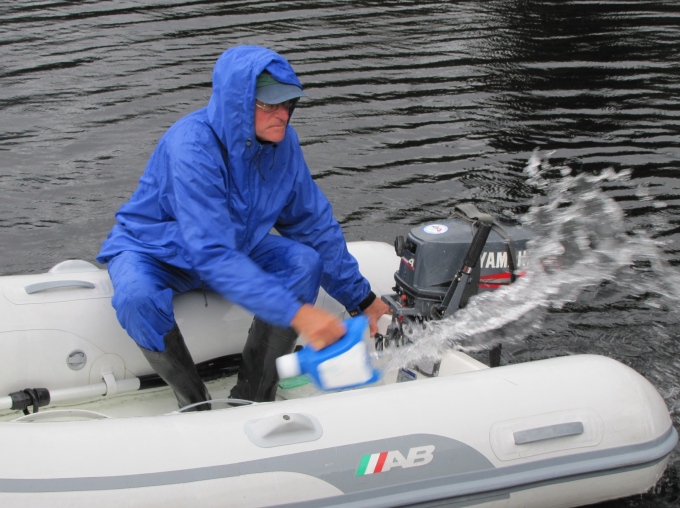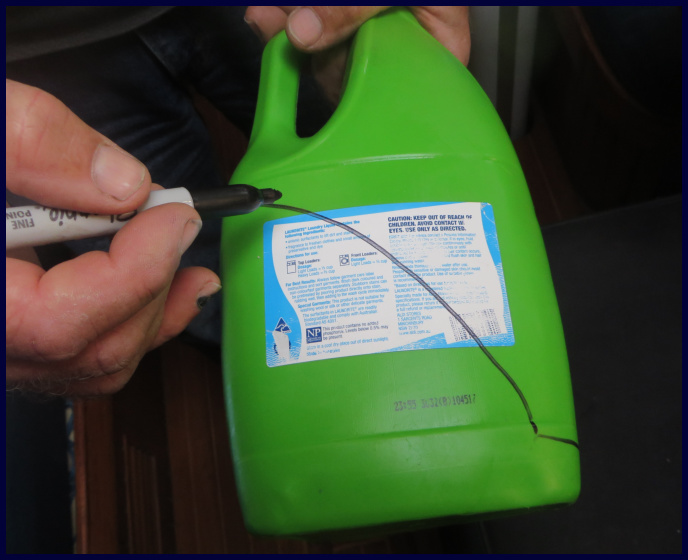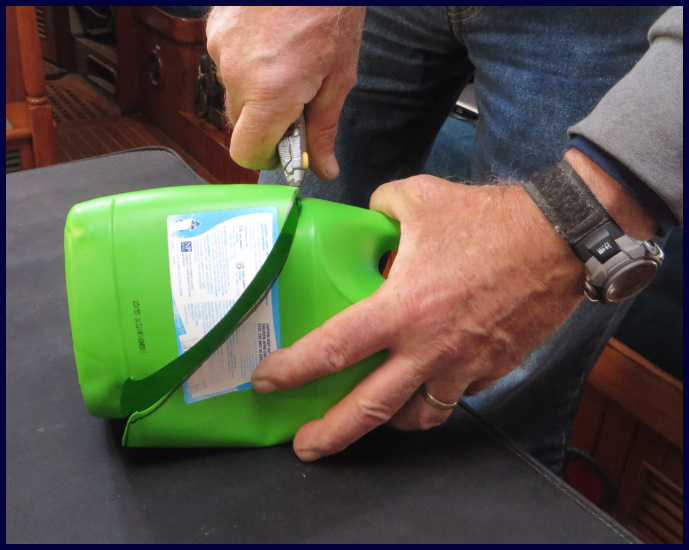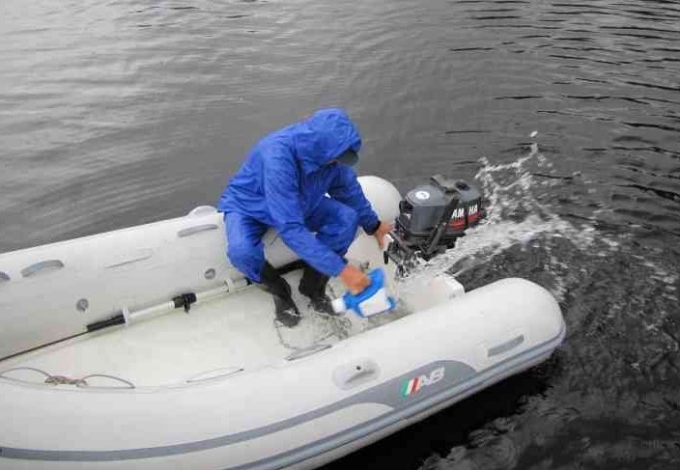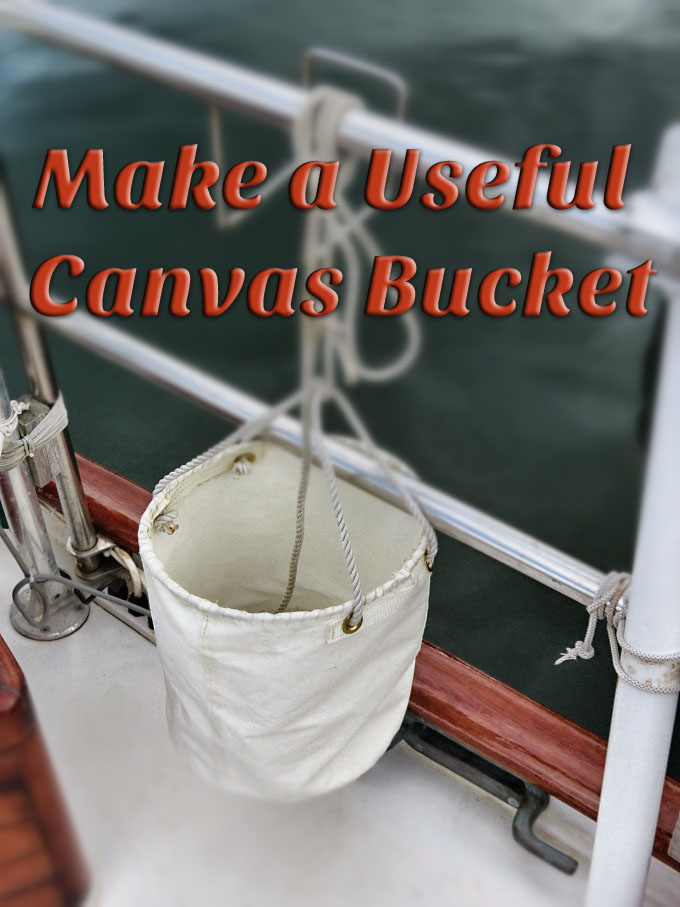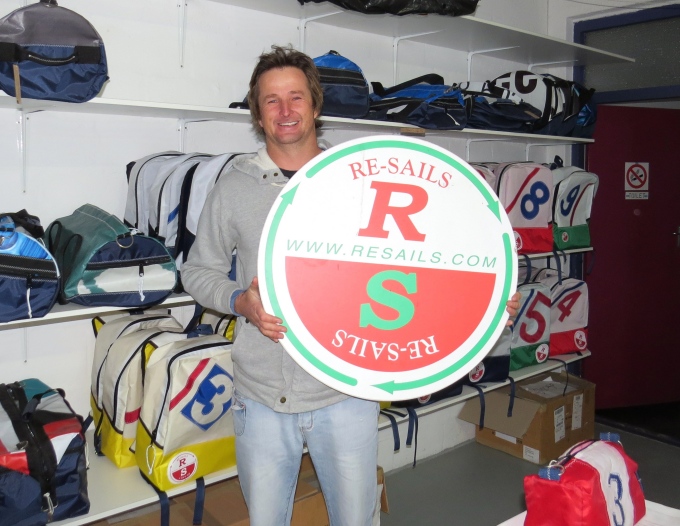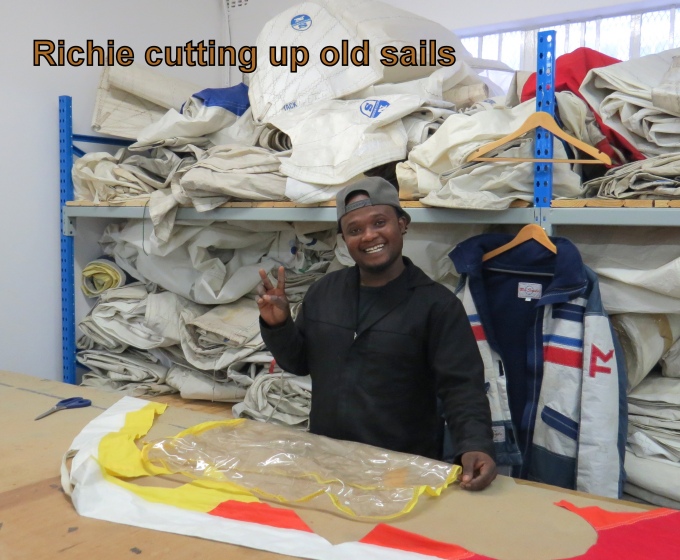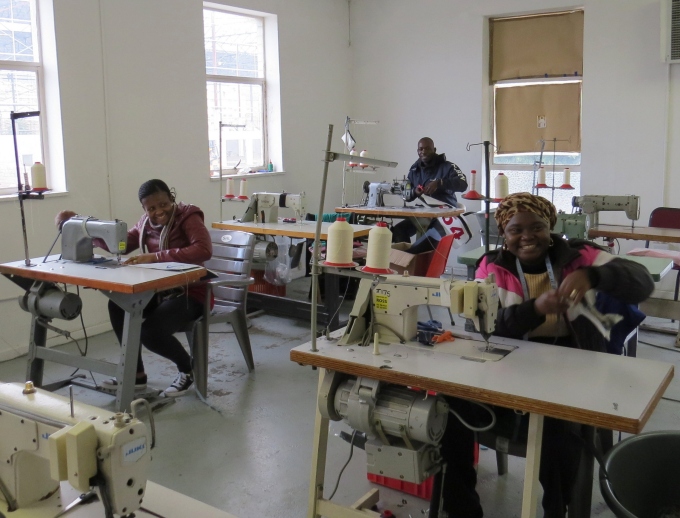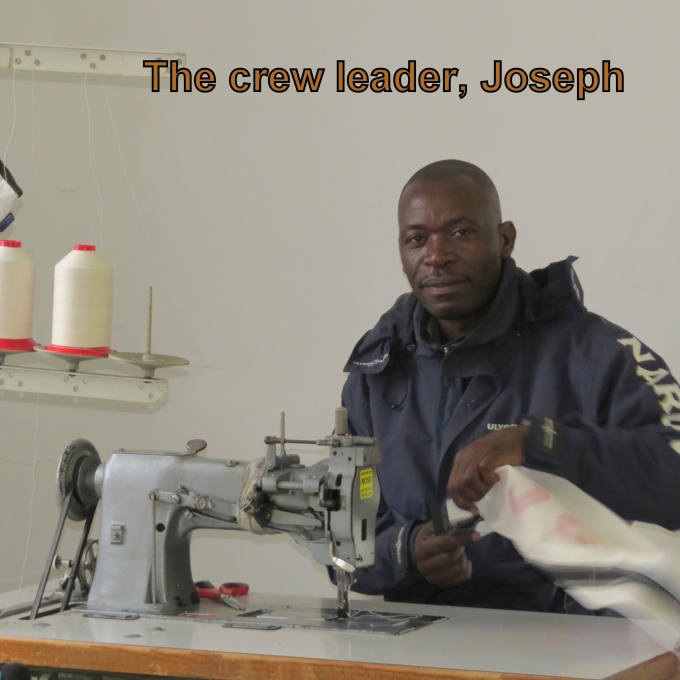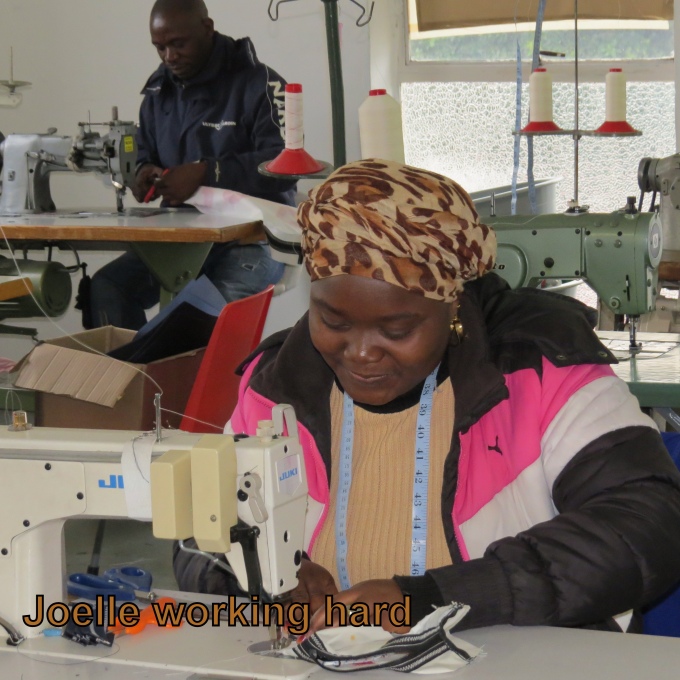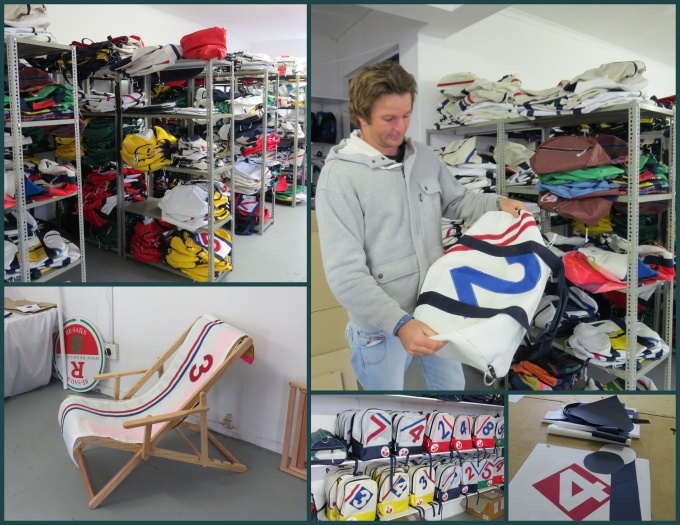The Blue View - Baby Needs a New Bailer
/ Our old dinghy bailer is just about shot. The sun's UV rays have made it brittle and it's starting to crack. No matter – Marcie just finished a jug of laundry detergent, and it is the perfect size and shape for a new bailer. Being the parsimonious sailors that we are, we make use of everything we can.
Our old dinghy bailer is just about shot. The sun's UV rays have made it brittle and it's starting to crack. No matter – Marcie just finished a jug of laundry detergent, and it is the perfect size and shape for a new bailer. Being the parsimonious sailors that we are, we make use of everything we can.
When there is a lot of water in the dinghy, most anything will work as a bailer. That's not to say that a good bailer wouldn't be preferable, but I've used hats, oars, and even cupped hands quite effectively when there wasn't a real bailer available (although there were times when I wished I had webbed fingers). To move a lot of water quickly, it is more the technique than the tools at hand.
When a good bailer is worth its keep is when the water gets down to the last few inches. Then I want a flat bottomed scoop. We've certainly purchased those classy bailers sold at the chandleries in the past, but I don't find that they do any better job of bailing than my homemade jobs. They do last about twice as long in the sun, but twice nothing, which is what mine cost, is a lot less than the cost to buy a bailer.
I find a 2L size laundry detergent jug is perfect … it is flat on the sides, has a handle, and is big enough to bail large quantities of water quickly, but small enough to dip out the last of the water from the small well near the transom of our dinghy. Usually, Marcie finishes up the laundry detergent in the current jug just about the time the old bailer has about had it. Any similarly shaped heavy plastic container with a screw-on lid will work, however - bleach bottles, milk jugs, etc. In a pinch, a gallon (4L) size jug will work, but is a bit too large and flimsy for my liking.
When I'm done bailing, I stuff the bailing sponge into it. This weighs it down enough to keep it from blowing away.
The first few times I made a bailer, I simply dug out my box cutter and hacked away. The bailers worked just fine, but were sometimes rather oddly shaped. Now I mark the jug where I intend to cut it. BTW, it took me approximately ten times longer to write the blog about making a bailer than it did to actually make it.


